
energizing the everyday recognizes the collecting vision of george r. kravis ii and its synergy with cooper hewitt’s broad and diverse collection of modern and contemporary design. energizing the everyday recognizes the collecting vision of george r. kravis ii and its synergy with cooper hewitt’s broad and diverse collection of modern and contemporary design. an early interest in records and a background in broadcasting inform kravis’s enthusiasm for and knowledge of radios, televisions, and technology. as kravis’s passion for design grew, he expanded his collecting efforts beyond american electronic devices to include industrial design and furnishings for the home and office from the united states, europe and asia. the exhibition features highlights of the kravis collection dating from the early 20th century to the present. from industrial design and furniture to tableware and textiles, the exhibition makes visual and material connections across time and geography to relate the far-reaching impact of design on the enhancement of daily life.

[ what ]
Season 16, Episode 3 of 27: Tulsa, Oklahoma USA – Hour Three
In Tulsa, Oklahoma, ANTIQUES ROADSHOW host Mark L. Walberg joins appraiser Eric Silver at the Philbrook Museum of Art to look at seemingly everyday housewares, appliances and electronics that were transformed into stunning functional art by 20th- century industrial designers.
The episode will feature footage of “Better Living by Design” – the Philbrook Museum of Art’s new-permanent industrial design colletion that includes 50 selections from the George R. Kravis II Collection. Curated by David Hanks and designed by Wendy Evans Joseph Architecture, the collection is comprised of furniture, ceramics, glass, metalwork and plastic objects that represent the core of the museum’s industrial design holdings.
[ when ]
Monday, 16 January | 8 pm est on PBS
[ who ]
George R. Kravis II, a Tulsa-based philanthropist and collector, has assembled one of the largest leading collections of design in the U.S. International in scope the collection encompasses objects and products created by central figures in the history of design from Peter Berens to Yves Behar. Compromised of only the highest in quality, the collection reflects Kravis’ keen eye and passion for the material–collecting in depth to include color variations, multiples and full designer/manufacturers oeuvres. His guiding principles, preservation and education, inform this “encyclopedic” and extraordinary approach to collecting. The collection includes works from c.1900 to the present, with particular strengths in American industrial design of the 1930s and ‘40s. [ kravis collection ]
In November 2010, Kravis received the Governor’s Arts Award, which recognizes individuals and organizations for their significant contributions to the arts in Oklahoma. Kravis was recently named to Art + Auction Magazine’s Power List 2011 for his significant impact within the art world.
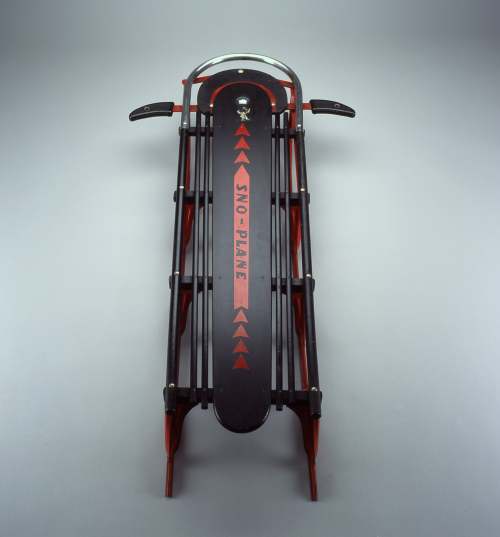
american streamlined design: the world of tomorrow. february 6. tulsa, oklahoma.
designer harold l. van doren / john gordon rideout. skippy sno-plane sled. c. 1933

designer dr. peter schlumbohm. cinderella garbage pail. c. 1930–1940

designer dave chapman. heat king fan heater. c. 1948

designer robert davit budlong. ward co. zephyr fan (model D22-TL). c. 1936
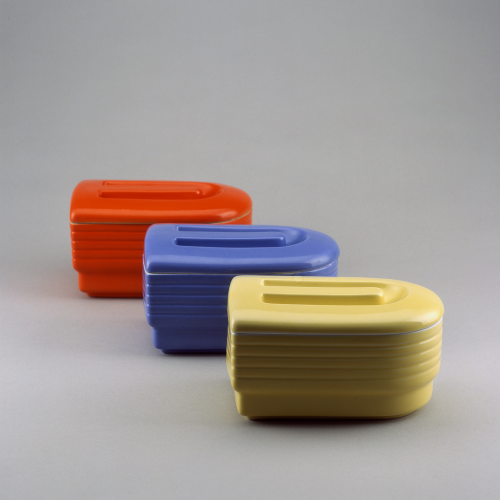
design attributed to ralph e. kruck. general refrigerator leftover dishes. c. 1939
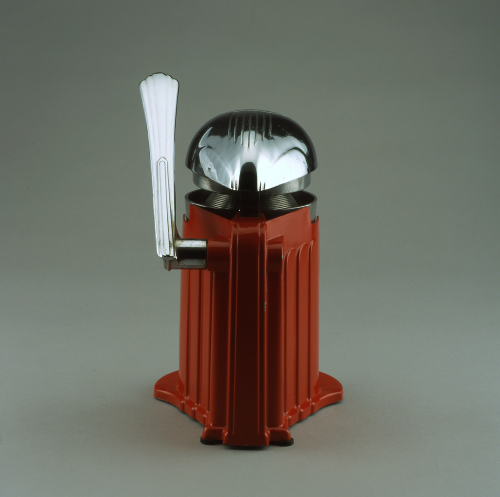
joseph m. majewski, jr. juice-o-mat juicer. c. 1937
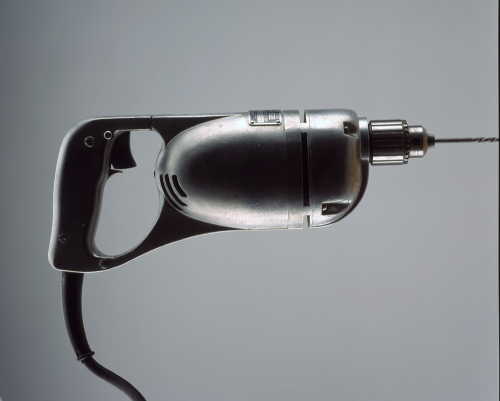
designer unknown. skilsaw electric drill. c. 1935–1940
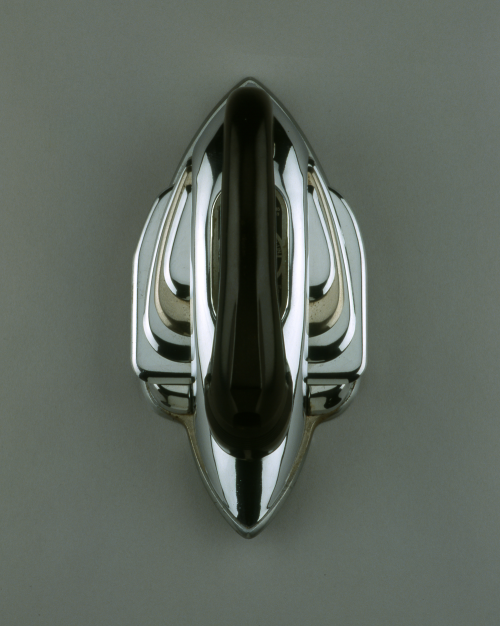
designers clifford brooks stevens / edward p. schreyer. waverly petipoint iron. c. 1941
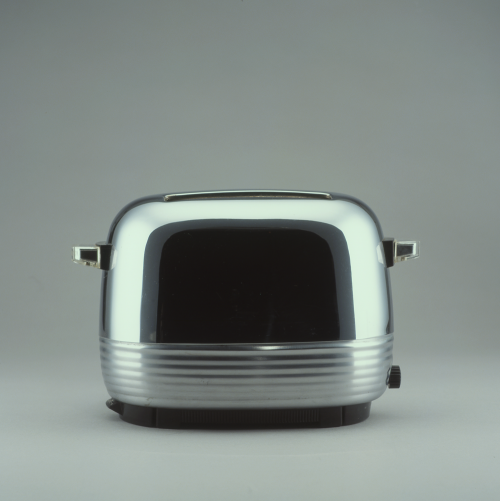
designer donald earl daily. proctor automatic pop-up toaster. c. 1947
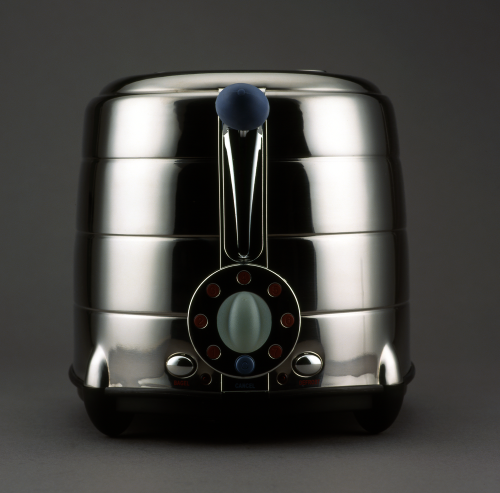
designer michael graves. rival toaster (model TT 9275). 2000
American Streamlined Design: The World of Tomorrow, focuses on a design era that emerged during the 1930s and 1940s, characterized by curving forms, and smooth, clean silhouettes. The style, which suggested speed and glamor, entered American design in the post-Depression years. It was widely applied in new forms of architecture, interior decoration and everyday household goods for the home and office.
American Streamlined Design presents the work of such leaders in consumer and industrial design as Raymond Loewy, Norman Bel Geddes, Henry Dreyfuss, and Walter Dorwin Teague, as well as less well-known talents, including Egmont Arens and Robert Heller.
Over 185 objects in diverse new materials, from Bakelite to stainless steel, are organized thematically around the spheres of American life in the 1930s-50s: the office and workroom, the living room, kitchen, and bath, recreation and transportation. A final section, Streamlining Now, looks at how streamlining still affects design today.
With the recent acquisition of the George R. Kravis world-class industrial design collection, its strategic partnership with the Vitra Design Museum (Weil am Rhein, Germany), and the announcement of the museum’s forthcoming satellite location for modern and contemporary art and design in Tulsa’s Brady Arts District, make the museum a major new destination for the appreciation and curatorship of 20th century design. This exhibition was organized and is circulated by the Liliane and David M. Stewart Program for Modern Design, Montreal. [philbrook museum]
view american streamlined design part 1
 american streamlined design: the world of tomorrow. february 6. tulsa, oklahoma.
american streamlined design: the world of tomorrow. february 6. tulsa, oklahoma.
designers harold l. van doren / john gordon rideout. skippy-racer scooter. c. 1933

designer unknown. sterling streamline iron. c. 1930–40

designer kem weber. lounge chair. 1934

designer unknown. mixall jr. portable electric mixer. 1945–55.
American Streamlined Design: The World of Tomorrow, focuses on a design era that emerged during the 1930s and 1940s, characterized by curving forms, and smooth, clean silhouettes. The style, which suggested speed and glamor, entered American design in the post-Depression years. It was widely applied in new forms of architecture, interior decoration and everyday household goods for the home and office.
American Streamlined Design presents the work of such leaders in consumer and industrial design as Raymond Loewy, Norman Bel Geddes, Henry Dreyfuss, and Walter Dorwin Teague, as well as less well-known talents, including Egmont Arens and Robert Heller.
Over 185 objects in diverse new materials, from Bakelite to stainless steel, are organized thematically around the spheres of American life in the 1930s-50s: the office and workroom, the living room, kitchen, and bath, recreation and transportation. A final section, Streamlining Now, looks at how streamlining still affects design today.
With the recent acquisition of the George R. Kravis world-class industrial design collection, its strategic partnership with the Vitra Design Museum (Weil am Rhein, Germany), and the announcement of the museum’s forthcoming satellite location for modern and contemporary art and design in Tulsa’s Brady Arts District, make the museum a major new destination for the appreciation and curatorship of 20th century design. This exhibition was organized and is circulated by the Liliane and David M. Stewart Program for Modern Design, Montreal. [philbrook museum]
see american streamlined design part 2


















